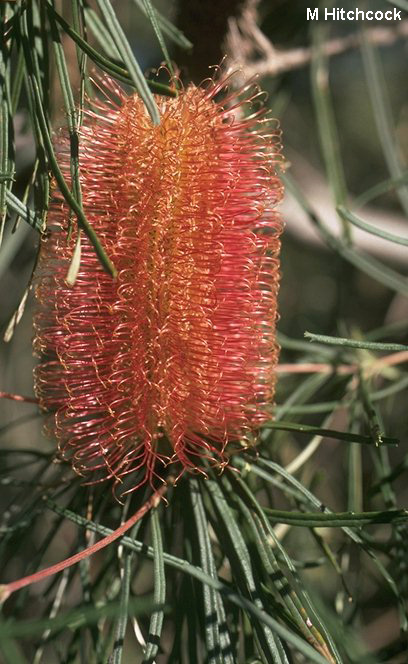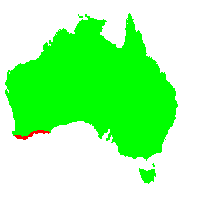General Description:
Banksia occidentalis can be found as a small tree to 7 metres or a shrub about 2 metres high, especially in coastal areas such as near Black Point. Regardless of form, plants are non-lignotuberous. Leaves are linear, 40 to 130 mm long by 2 to 3 mm wide with recurved (rolled under), sparsely serrate margins. The grey-brown bark is smooth with lenticels. Flowering occurs in summer and autumn with occasional flowers at other times.The bright red cylindrical spikes are 40 to 140mm high and 65 to 75mm wide at flowering. Colour variants have been recorded, including pink, and pale yellow from near Denmark. Sadly, this latter population may have been wiped out by Phytophthora. The seeds are enclosed in follicles attached to a woody cone and are generally retained within the cone until burnt.
Being non-lignotuberous, B.occidentalis relies solely on seed for regeneration. Given the time it takes for plants to reach flowering (4-6 years), fires at too short an interval could also eliminate this species from certain areas. Furthermore, plants are very susceptible to dieback. Thus, it is considered vulnerable in its natural habitat.
In cultivation, this species has grown well in Mediterranean climates with dry summers and as far north as Armidale in NSW. However, in common with most western species, B.occidentalis is regarded as unreliable in areas with humid summers and has been known to die suddenly in cultivation in such areas.
Propagation from seed is relatively easy.
* EPBC Act = Environment Protection and Biodiversity Conservation Act 1999;
ROTAP = Rare or Threatened Australian Plants (Briggs and Leigh, 1988)
For further information refer the Australian Plants at Risk page

Banksia occidentalis
Photo: Maria Hitchcock
 Australian Native Plants Society (Australia)
Australian Native Plants Society (Australia)